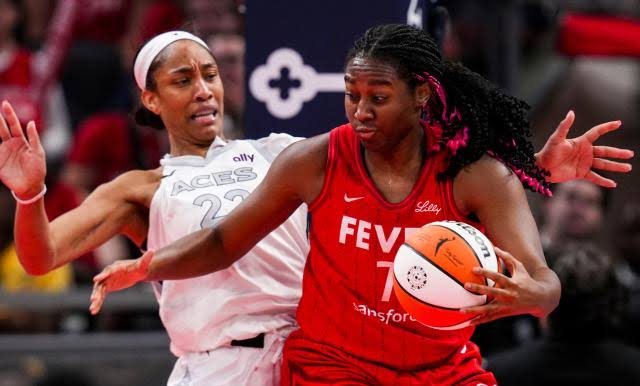The Indiana Fever’s recent matchup against the Las Vegas Aces highlighted some key areas of struggle, particularly with foul trouble and difficult shooting, which ultimately contributed to their inability to secure a win. The Fever, a team brimming with young talent, were up against one of the most dominant squads in the WNBA, and their shortcomings were glaring, especially when trying to overcome their latest setback against the reigning champions.
### Foul Trouble Plagues the Fever
One of the most significant issues for the Fever during the game was foul trouble. Several key players found themselves in early foul situations, which forced head coach Christie Sides to make critical adjustments. When players like NaLyssa Smith or Aliyah Boston—the team’s cornerstone—have to sit out due to fouls, it severely disrupts the team’s rhythm and chemistry on both ends of the floor. Defensively, the Fever could not play as aggressively as they would have liked, especially against the offensive juggernaut of the Aces. Players were hesitant to challenge shots in fear of picking up more fouls, which allowed Las Vegas to attack the rim freely.
This lack of defensive assertiveness also led to more opportunities for the Aces at the free-throw line. The Aces, with stars like A’ja Wilson and Kelsey Plum, are highly skilled at drawing fouls, and they took full advantage of the Fever’s lack of discipline. The disparity in free-throw attempts not only hurt the Fever on the scoreboard but also disrupted the game’s tempo, making it difficult for Indiana to find their footing.
### Shooting Woes Compound the Problem
As if foul trouble weren’t enough, the Fever’s offensive struggles, particularly in shooting, compounded their problems. The team had difficulty finding a rhythm, shooting a poor percentage from both the field and beyond the arc. While the Aces’ defense is notoriously tough, the Fever missed several open looks that could have kept them in the game. In key moments, when the Fever needed to close the gap or build momentum, their shots just wouldn’t fall.
The shooting difficulties were widespread, with even reliable scorers like Kelsey Mitchell struggling to get going. When a team’s primary offensive threats are having an off night, it becomes exponentially harder to execute any game plan. Indiana’s lack of consistent outside shooting allowed the Aces to clog the paint, making it even more difficult for the Fever to generate offense inside with their post players like Boston and Smith.
Shooting slumps happen to every team, but for a young squad like the Fever, these stretches can be particularly damaging. The team’s relative inexperience means they often struggle to generate other forms of offense when their shots aren’t falling. Instead of attacking the basket or drawing fouls, they relied too heavily on jump shots, which further played into the Aces’ hands.
### Missed Opportunities and Lessons Learned
Despite these challenges, the Fever had moments where they could have turned the tide. However, missed opportunities—whether it was turnovers, botched defensive assignments, or poor shot selection—kept them from capitalizing on these chances. Against a team like Las Vegas, even the smallest mistakes are costly. The Aces are a well-oiled machine that pounces on any opening, and the Fever’s lapses in focus allowed the Aces to build and maintain their lead throughout the game.
For Indiana, this game serves as yet another reminder of the gap they need to close in order to compete with the league’s elite teams. The Fever are in the midst of a rebuild, and games like this, though frustrating, are part of the growing pains.
The Aces, on the other hand, continue to showcase why they are the team to beat, with their discipline, depth, and ability to exploit opponents’ weaknesses. For the Fever, addressing their foul trouble, improving their shooting consistency, and learning how to execute better under pressure will be crucial if they hope to contend in future seasons. In the immediate aftermath of this latest setback, it’s clear that while the Fever have the potential, they still have a long way to go in realizing it.


